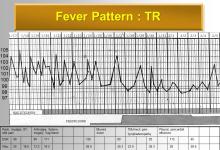Stable SLE - Should you Withdraw Immunosuppressant or Glucocorticoids? Save

An open-label, single-centre, randomized controlled trial tested whether immunosuppressant (IS) withdrawal is noninferior to glucocorticoid (GC) withdrawal in systemic lupus erythematosus (SLE) patients and found that IS withdrawal is noninferior to GC withdrawal in SLE patients in long-term clinical remission.
A total of 121 adult SLE patients were enrolled if they were in clinical remission for ≥1 year, on stable GC (prednisolone ≤7.5 mg/day) and on maintenance non-biological IS for ≥3 years. Patiens were randomized to either taper GC or IS over 3 months. The primary endpoint was the proportion of patients experiencing a flare, defined by the SELENA-SLEDAI Flare Index (SFI) at 52 weeks.
117 patients were randomized and treated (58 GC withdrawal, 59 IS withdrawal).
At 52 weeks, flare was more common (31%) with GC withdrawal (vs. 20.3% with IS withdrawal) - this result was non-inferior (risk difference, –10.6% [95% CI, −26.5 to 5.1]; P = 0.18), demonstrating the noninferiority of IS withdrawal.
At maximum follow-up (week 104), 44.8% in the GC withdrawal group and 32.2% in the IS withdrawal group experienced a flare (risk difference, −12.6% [95% CI, −30.1 to 4.9]; P = 0.11), confirming the noninferiority of IS withdrawal at 2 years. Damage accrual was similar between the two groups at both endpoints.
The decision on whether to withdraw GC or IS needs to be personalized based on the relative benefits/hazards of IS or GC.










If you are a health practitioner, you may Login/Register to comment.
Due to the nature of these comment forums, only health practitioners are allowed to comment at this time.